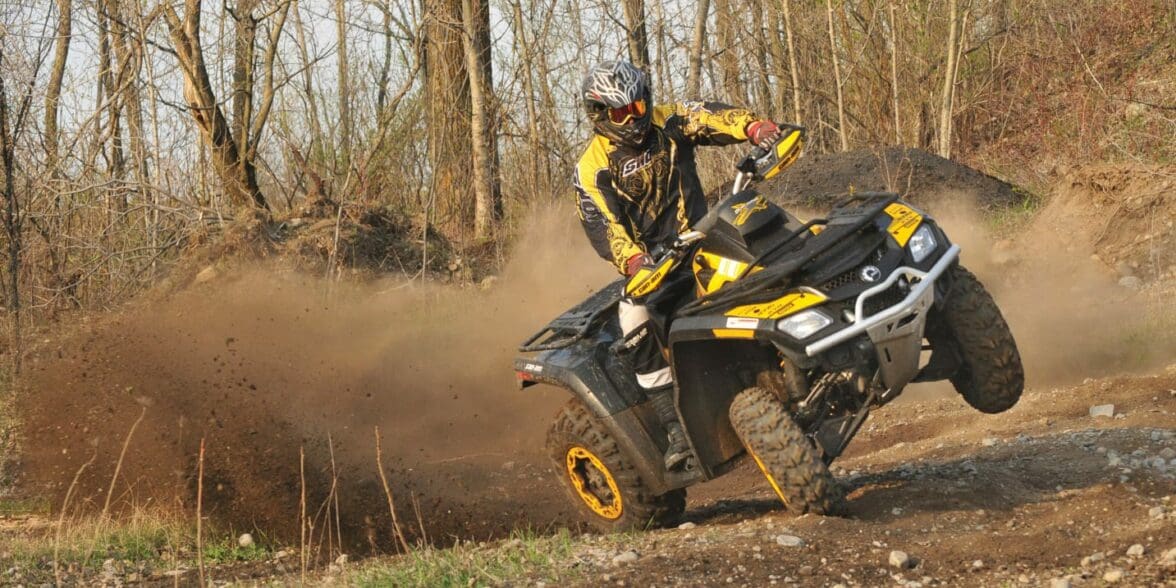Whether you’re just starting out in your ATV adventures, or are a veteran who has finished many runs with only your goggles clean of mud, having a full and complete set of ATV riding gear is essential for giving you the most enjoyment and protection on four small wheels. Life is too short to stay on the road, anyways!
While many may say that all you really need is an off-road helmet and everything else is optional, it is still a better idea to fully and properly gear up for your adventures. In this guide, we’ll go over the five most important pieces of personal protective equipment for all skill levels of riding, as well as a small section on good optional pieces of gear.
What Kind Of Gear Do You Need To Ride An ATV?
ATV Helmets & Goggles
As we stated just above, you do need a helmet and eye protection, at the very least. Not only is it common sense to protect the most vital organ in your entire body, it’s also the law in many States and an enforced rule at many off-road riding areas, especially if there is a course laid out in the dirt to follow. That, technically, is all that is legally required to ride.
However, since ATVs do fall into the “powersports” category in which you will also find motorcycles such as motocross and dirt bikes, the same adage that applies to those bikes applies to ATVs: All The Gear, All The Time. Another way that this is expressed, mostly in Europe and Australasia, is “Dress for the slide, not for the ride.”
The basic concept remains the same, no matter how you express it. It is far, far better to spend the money, time, and effort to get a full set of proper gear that protects you head to toe for any motorized hobby than it is to risk going without it.
ATV Gloves & Boots
For those of the four wheeled persuasion, you will definitely want (at the very least) dirt riding gloves and off-road boots to go with your helmet and goggles. This is for a very simple reason: the appendages at the end of your limbs are what operate the ATV.
You can’t counterlean if you have a broken foot. You can’t hit a thumb throttle if you’ve scraped up and damaged your thumb from even the lightest spill. You don’t need the most aggressive, high speed gloves that motorcycle racers use, but you will want ones that are CE rated for off-road use and have both finger and knuckle armor.
Boots translate extremely well from motocross to ATVs, and even some ADV motorcycle riding boots will do you just fine on an ATV. The biggest thing about these boots is that they are always high boots, meaning that your ankle, tibia and fibula are all encased in an armored piece of gear that goes halfway or more up to your knee.
If you need to suddenly jump off if your ATV tips, or need to plant a boot in the footwell to counterbalance, these boots have high-grip, anti-slip soles that are designed to be used in mud, rain, snow—and even through sand and dust if you’re riding on a dry day.
ATV Armor
If you still have room in your budget, the next most important things to look for are body protectors. These come in many forms, from a full torso and arms base layer to elbow pads, knee pads, and an over-the-head side-buckled armor vest for your chest and back.
You most certainly do not want to come off your ATV, land with your hands protected, then bash your knee into a rock hidden in the dirt and have a broken patella that could end your riding season. Investing in armor is literally an investment in yourself.
As well, you will more than likely find these pieces separately for “cheap.” Quotes are used there as these pieces often cost between $15 each for a bare minimum set to $50+ for the name brand stuff from AlpineStars, Leatt, Fox Racing, et al.
Leatt even makes a full torso base layer that we highly recommend if you can afford it, as it combines the functionality of a cooling shirt to keep you comfortable while giving full torso protection, even on your flanks, collar, and shoulders.
With a full set of gear, a well maintained ATV, and some common sense in your brain, you will be able to keep riding season after season. Instead of recovering at home wearing a cast around your wrist, arm, leg, or foot, it’s far better to be out enjoying the mud, the dirt, the forest trails, and the adventures you will have with friends to talk about over your beverage of choice in the evening around the campfire.
Choosing Your Essential ATV Riding Gear:
ATV Helmets
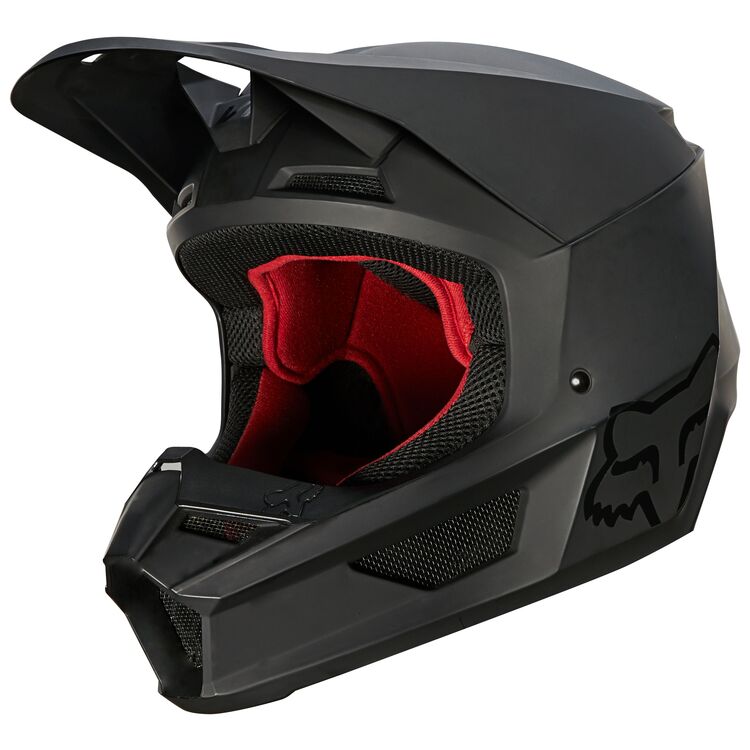
Probably the only part of this list that is an actual legal requirement in Canada, and many of the States in the Union, a properly sized, appropriately certified helmet is crucial for your safety. If you do not have an ATV specialist store in your area, many motorcycle gear stores will have dirt bike and motocross helmets that are cross compatible with ATV riding.
The biggest factor to look for with a helmet is fit. If you have a long oval head and try to fit an intermediate oval helmet, chances are that you’ll start to get pressure point pain on your forehead and the back of your head before long. As well, trying to squeeze your head into a helmet that is obviously too small can actually decrease the protective and impact absorbing qualities of the helmet’s EPS foam.
After fit, all the other factors for a helmet can all be considered secondary considerations. These factors are weight, ventilation, eyeport size compatibility with goggles, if the helmet is durable, and does the helmet have a secure chinstrap system, like a stainless steel double-D ring or a ratchet-lock system.
These helmets can range anywhere from a youth helmet at about $100 all the way up to competition grade $1,000+ helmets that are made of carbon fiber and kevlar weave. Your best bet is to visit a motorcycle or ATV gear shop, speak to their helmet guys and/or gals, and get a properly fitting helmet for your budget.
Considerations When Buying an ATV Helmet
- Never buy a helmet that is not DOT (US Department of Transportation), CE (French Conformité Européenne), or ECE (EU Economic Commission for Europe) rated. You might be able to find a “cheap” helmet on Amazon, but it is most likely a knockoff
Any properly certified helmet will state so quite proudly and prominently in any sales listing. An example is the Fox Racing V1 MIPS above on the gear site RevZilla.

- It is far better to go a gear store in person, as they will often have gear experts that can take appropriate head measurements and determine your head shape (round oval, intermediate oval, long oval), and, most importantly, you can try on demonstrator helmets to see which ones fit you best.
- When you wear a helmet, the chin strap should be near or very lightly against the front of your neck, but should not be chokingly tight against your neck.
- Any new helmet should fit almost uncomfortably snug, as breaking it in through wear will settle the padding and liner in somewhat. The best advice we’ve heard about how a settled-in helmet should fit is that if you were chewing gum, your teeth would just be scraping your cheeks.
ATV Goggles
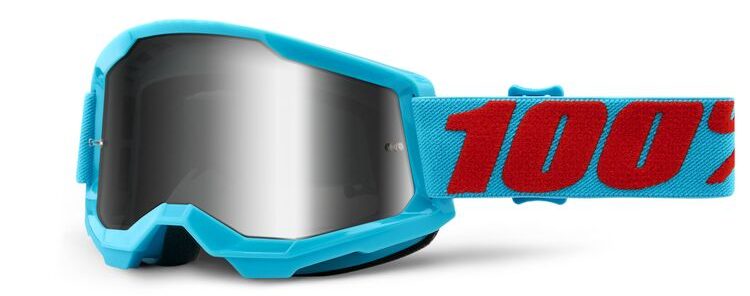
In line with the helmet as the most important piece of riding gear, a proper set of ATV goggles keeps you riding all day long. We must once again emphasize the word proper, as there have been some examples of snow goggles getting used in the colder months and a piece of gravel or a rock shattering the lens.
When you’re looking at goggles, make sure that they are polycarbonate, lexan, or plutonite and carry the ANSI Z87.1 certification. To obtain this certification, the goggle lens material must not crack, shatter, or be penetrated by a 0.25 inch diameter steel ball fired at 150 feet per second. It must sustain at least 20 or more impacts from all different angles without penetration to receive the certification.
Other things to look for with off-road goggles is UV protection rating and shading, as well as that they fit well with the helmet you have chosen. Some helmets come with goggles in the package, while most motocross or ATV gear stores should be able to find you a pair that works with your helmet if none are combined with the helmet.
Other things to consider are ventilation to clear away sweat and mist off the lens, padding, if the frame of the goggles will impede your vision in any direction, and if the strap is adjustable or a one-size-fits-all solid band.
Considerations When Buying ATV Goggles
- DO NOT use ski goggles. Ski goggles use a much thinner plastic in the lens that is not able to withstand ballistic impacts.
- DO use motocross or sportbike-spec riding goggles, as these have the strap anchors at the front beside the lens, and use a ballistic polycarbonate lens that is able to withstand impacts from rocks, debris, branches, etc.
- Make sure your goggles fit in your helmet. It’s okay to have a little bit of a gap between the helmet visor port sides and the goggles. You want to avoid having goggles that are too big for the visor port on your helmet, as they won’t sit against your face correctly.
- If you can, spend the small extra amount of money to get UV protection rating and shading, as that makes the goggles both sunglasses and personal protective equipment so you don’t have to fiddle with shaded inserts.
ATV Boots
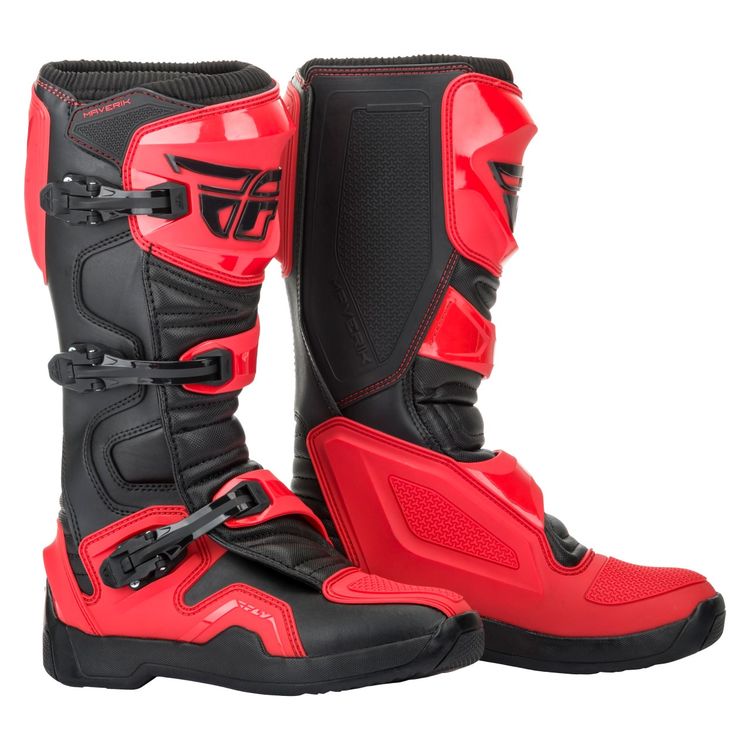
The second most important piece of gear to acquire is a good, high topped pair of ATV boots. Again, there are some motocross and dirt bike boots that translate across to ATV riding here, but more often than not, ATV boots are manufactured with a bit more flex allowance in the ankle.
The important things to look out for here are fit, armor/impact absorbing material, waterproofing while still being breathable, and if you look at the higher end boots with exo-skeletal support structures, that the pivot points match your body’s own pivot points. That last feature usually is on boots that are $300 or more.
The boots you choose should have good, solid grips on the base, be at least mid-calf or higher, and have toe armor, a solid shank, heel armor, and ankle protection, with decent to heavy external armor over the shin area. This is because as you are riding down the trails, if a branch whips around your front wheel well and smacks you dead middle of your shin, you want the boot to take the impact, not your bone.
Another factor that having good impact absorbing materials for is that if you get into a tumble and your quad or ATV decides to try rolling over your leg as you tumble, the armor and support of the boot might be what gives you a half day with an ice pack on it, instead of 4 months out from riding with a tib/fib fracture.
Considerations When Buying ATV Boots
- Almost all motocross, ADV, or such boots have a midsole shank, either of metal or TPU plastic armor. These do take some getting used to, so if you are finding the boot very uncomfortable on your midsole, gel or padded insoles can be used to relieve the pressure.
- With the type of riding that ATV riders prefer (read: mud), waterproof boots are highly recommended. A side benefit is that if you are a trail rider and need to cross a stream, you don’t need to stand on the seat to keep your feet dry!
- If the boots are a bit loose after breaking in, many motocross and ADV boots are adjustable. Also, socks made of merino wool will fill out those spaces nicely, and is a non-itchy, hypoallergenic, and moisture wicking material to keep your feet dry inside your boots.
- If your budget allows for it, boots with an extra exo-skeletal support like the SIDI Adventure 2’s are some of the best styles of riding boots you can get, on top of being waterproof and well armored.” This is because the external structure is designed to be the point of failure in a serious enough tumble, instead of your heel, ankle, or leg. It’s better to destroy a boot than spend the thousands for hospital care from broken ankle.
ATV Gloves
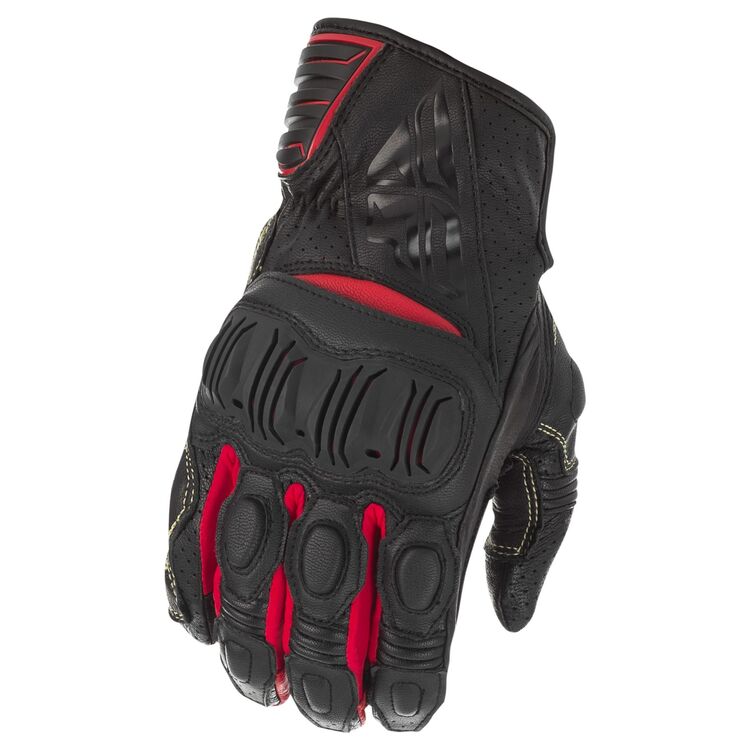
With your head, eyes, feet, and lower legs safe, the next most important bits of your body to protect are your hands. As two of the five contact points your body has with the ATV, keeping your hands protected is vital for continued enjoyment of your ride.
This is one area where standard dirt riding gloves don’t translate over to ATV riding, and you will want to either find ATV specific armored gloves, or supercross armored gloves.
Much like a motorcycle glove, what you are wanting is a thin but substantial palm area to give you a good bar feel, while the fingers, knuckles, and back of your hand receive impact armoring.
As many ATV riders know, once you get rocking and rolling in a dirt pit or down a trail, those knobbly tires just love to launch pebbles and gravel at just the right height to ping off your hands.
While grip shields and barkbuster shields do help, it’s never too much to have what is known as “protection in depth.” In simple terms, this means that if a big rock smashes through your grip shield, having armored gloves gives you that second line of defense, instead of a big-ass bruise on your knuckle or a mild fracture to one of your fingers.
Considerations When Buying ATV Gloves
- Short cuff, midcuff, and gauntlet style gloves all work with ATVs. What is important is that you have appropriate armoring on your fingers and knuckles.
- If you have barkbusters over your ATV handlebars, you might be able to get away with a lighter dirt bike glove, which isn’t as armored but gives excellent feel on the bars so you know what your front wheel(s) are doing.
- Don’t forget about your wrists! A lot of riding injuries come from ulnar fractures, hyperextened wrists and ligaments, and the like. Make sure if you’re wearing short cuff gloves, get ones with ulnar support like the $69.95 Fly Racing Brawlers above.
Base or Mid-Layer ATV Chest Armor
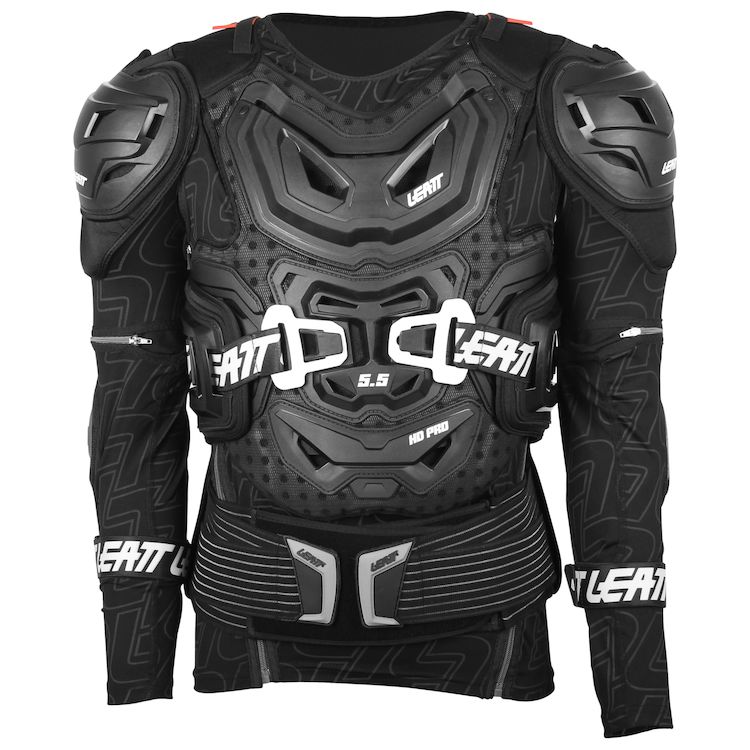
The last of what we consider the essential pieces of gear is armor that you wear under your jersey, either directly as a base layer or over a cooling shirt or undershirt. It is important to look after your chest, as it is in what motorcycle riders call the “life box” part of your torso. Your lungs, heart, and a few pretty important bits of your guts are covered by chest armor, and you never know when you might take a branch across your chest, or get a rock flung into it.
Chest armor also provides a vital protective function if you end up going over your handlebars in a crash. Depending on how low your saddle is, you might instead slide forward and impact your ribs on your bars instead of going over them, and if you hit solid steel or aluminum with human bone, guess which one gives way first?
If you do get launched, having that chest armor helps spread out the impact against the ground if you land face first. It happens fairly rarely, but taking a hit on landing at the perfect angle on your chest during a crash can cause your ribs to break and have one pierce into your lungs. This is a life threatening situation, and having something as simple as chest armor to spread out that impact force can prevent it.
Never underestimate the life-saving potential of a $50 to $150 piece of gear. Remember, armor is designed to destroy itself to prevent forces from reaching your body, and we would rather crush a vest of chest armor than suffer a punctured lung.
Considerations When Looking For Armor
- Always, always, always wear CE rated armor for any riding. Don’t use volleyball knee pads, MTB elbow pads, and the like. Use appropriate powersports rated armor for powersports.
- While fully armored base layers like the Leatt 5.5 Body Protector are some of the best options, if it’s outside of your budget, even soft armor like the Fly Racing Dirt Barricade Vest will still protect you against roosts from riders in front of you, and dull impacts somewhat if you do come off.
- If possible, hard armor is always better, as it is often designed to distribute the energy of an impact across a wide area to let your body absorb it.
Extra ATV Gear to Improve Riding
With the big five out of the way, there are quite a few other bits of gear that can help turn your ride from good to great.
Waterproof Riding Pants/Jersey
If you live somewhere where it rains often, having a breathable, light, waterproof set of pants and a jersey or jacket is a godsend. If it looks like it might rain, most ATVs are already weather sealed, and having their riders also ready to ride in the wet without actually getting wet means you can make your dirt pit trip into a fun mud pit trip!
Hydration Packs
Worn like a backpack with the water tube over the shoulder, a hydration pack is definitely something you want to have when you’re going to be riding for more than a couple of hours. Dehydration is not a pleasant experience when it gets serious, so staying hydrated and eating a quick snack with electrolytes that often fits in the pack with the water bladder can save you from some really nasty leg, stomach, and arm cramps when you get home.
Belt-Portable First Aid Kit
It’s amazing what you can pack into a small first aid kit these days, and many belt mounted packs that are less than 5 inches square have pretty much all the first aid supplies you need for minor and moderate situations. At the very least, you’ll want a pack with medical scissors, a variety of sizes of bandages, gauze pads, and anti-sting/anti-burn gels. Nothing is worse than running into an angry wasp on the trail, getting stung, and having to ride the rest of the day with a welt the size of Texas on your bicep!
Cooling/Warming Base Layers
If you live in a warmer State, base cooling layers are things you should definitely look into. Though designed for motocross and dirt bike riders, KLIM’s Aggressor -1.0 cooling shirt is a $50 investment in a cooling shirt that will keep your body temperature regulated, and use the air flowing through your jersey to wick away sweat and heat, but not leave you freezing cold.
The same can be said about those that are out there riding when the temperature is just a few ticks above freezing. Having a warming base layer that captures your body heat and doesn’t need to be battery powered or connected to the ATV means you can enjoy cold weather riding without issue.
Get Solid Gear for Safer Riding
While this is just a quick gear guide for the average ATV rider, do what best fits your budget. We definitely recommend at the very least a good quality helmet and proper, ANSI certified goggles, and build from there.
One thing that this list doesn’t take into account is your riding environment. If you’re a trail rider mostly, then good armored gloves, boots, and a chest protector can keep a branch from ruining your day. If you’re a dirt pit or field rider, you might just need a good pair of boots to go with your helmet and goggles. If you’re a mud pit enthusiast, then waterproof but breathable clothing is probably higher up on your list of priorities.
Whatever the case, what we promote here at ATV Style is that you ride responsibly, safely, and within your chosen ATVs limits, as well as your own. Part of off-roading is the ability to come back and do it again and again, because as we said in the introduction, life’s too short to not take it off-road for a rip!


